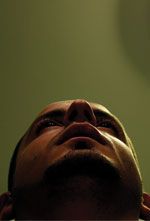Publication
Article
Psychiatric Times
Working With Traumatized Patients
Author(s):
There are feasible and replicable ways for caring adults to help heal themselves as well as the next generation through mass application of reflection and altruistic caring for the remaining offspring, whether in Sichuan, Gaza, New Orleans, or Haiti.

The articles in this special report are leading-edge, sharply focused reviews that will rouse you to think more incisively in your work with traumatized patients. There are no surprises here, but rather a breathtaking wealth of highly distilled wisdom useful in fortifying your practice and yourself. You’ll think differently about your patients with borderline personality disorder and bipolar disorder after reading the solidly summarized literature concerning their early childhood stressors. There is great depth of clinical, epidemiological, and neurophysiological evidence that adverse childhood experiences (ACEs) are cumulative. ACEs have extraordinarily bad effects on physical and behavioral health in countless ways, cost the nation billions of dollars in health care, and are a fateful causal factor that contributes to almost every psychiatric disorder.
You’ve known about child development all along, but now you can learn about the additive and graded physiological effects of trauma and the differential effects according to the developmental stage of life at which the trauma occurs. You’ve known about the hypothalamic-pituitary-adrenal (HPA) and chronic fight-or-flight reactions, but now you can trace in detail the HPA aspects of your psychologically bruised patients’ experiences and be definitively reminded how the hippocampus shrinks.
Transgenerational aspects of psychiatry are ready for your consideration. Catch up with the role of genes in trauma response, but don’t forget about family environmental events when taking a history. You’ll learn how even before birth, your patients were often influenced by the psychological stressors their parents experienced. Be warned: the memes of trauma can also be transmitted to you, leading to vicarious traumatization and job burnout. All is not lost, however. There’s a well-studied scale to measure how you are influenced by your patients’ traumas.
The role of psychiatrists in current disaster intervention is necessarily changing from a focus on the severely ill to prevention of illness. Numerous NGOs (non-government organizations) throughout the world are intervening preventively with structured interpersonal and psychosocial approaches. The organizations are often psychoanalytically informed and take the problems of critical incident debriefing into account, in order to be specially beneficial and not harmful for children. The methods are often reflective and narrative in technique and are manualized, widely disseminated, and to some extent evidence-based.
There are feasible and replicable ways for caring adults to help heal themselves as well as the next generation through mass application of reflection and altruistic caring for the remaining offspring, whether in Sichuan, Gaza, New Orleans, or Haiti. A large series of disaster and trauma response resources are freely available; guided activity workbooks are downloadable for your use without charge at www.childrenspsychological.org.






